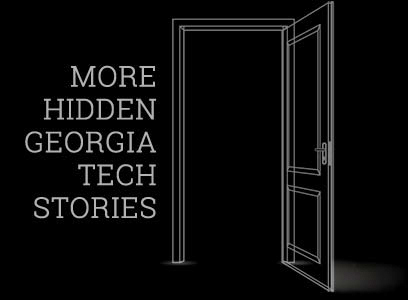
Hidden Georgia Tech: Architectural Details
By Victor Rogers october 16, 2017
Across the Georgia Tech campus, hidden spaces and forgotten places await rediscovery. Some are relics of an earlier time, difficult to find and explore. Others are very much in view, but often overlooked. Hidden Georgia Tech is a photo essay series highlighting places on campus that are hidden in plain sight.
ARCHITECTURAL DETAILS
With 400 acres and nearly 160 buildings, Georgia Tech’s main campus is filled with a range of architectural styles, including Collegiate Gothic, dating to 1888 when the university opened.
Part One of this three-part essay on architectural details will explore buildings in and around the historic district known as ‘the Hill.’
It’s all in the details, so take a closer look.
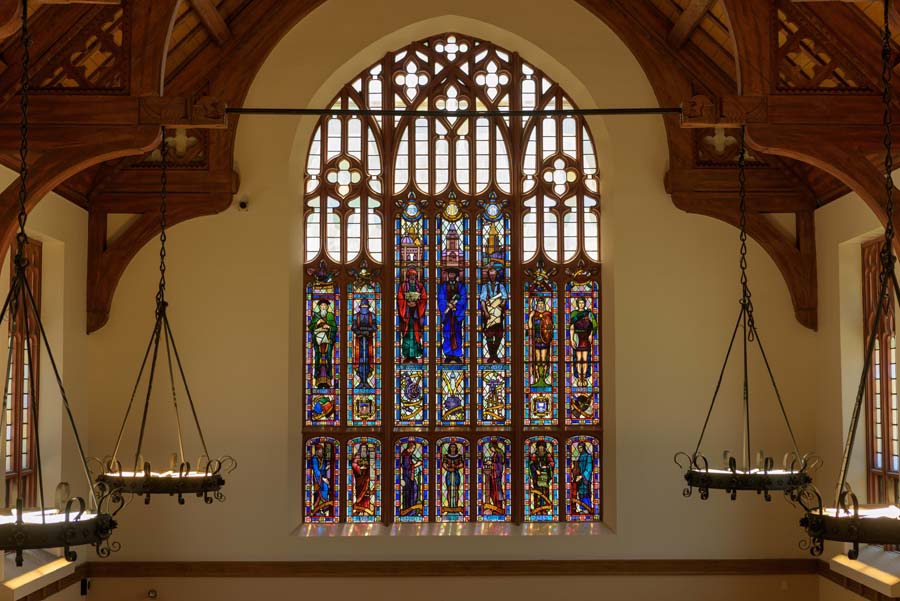
The southern wing of Brittain Dining Hall features a large stained-glass window, depicting allegorical figures of the disciplines at Georgia Tech, designed by sculptor and Tech alumnus Julian H. Harris.
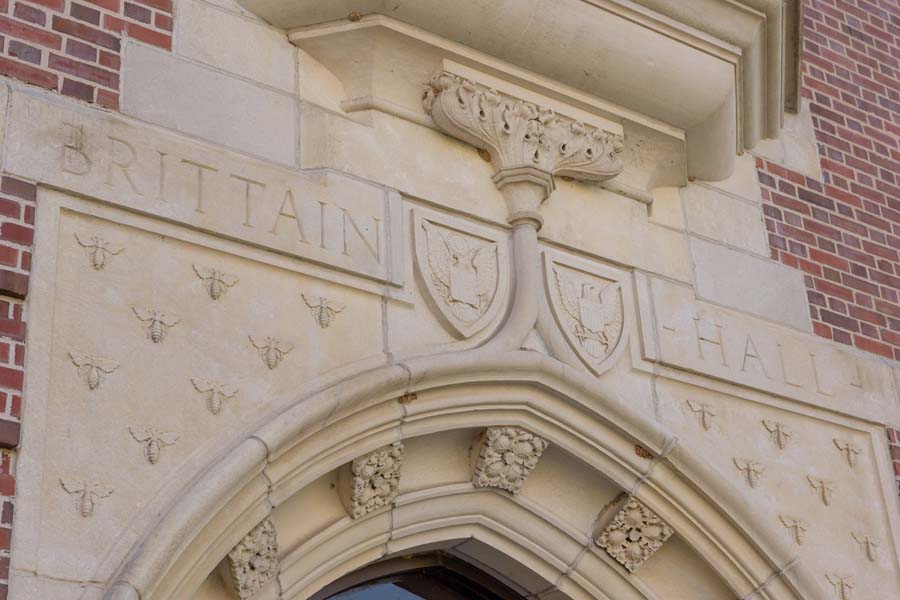
The entrance to Brittain Dining Hall displays the shields of the Army and Navy and a swarm of yellow jackets.
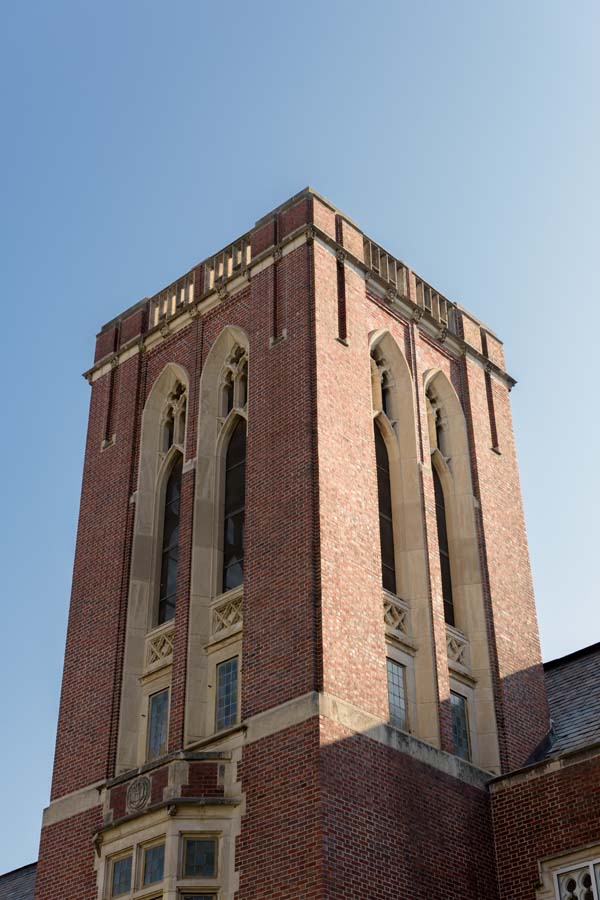
Brittain Dining Hall, dedicated in the name of Georgia Tech President Marion L. Brittain, has a tower in the center with two large wings that serve as dining areas.
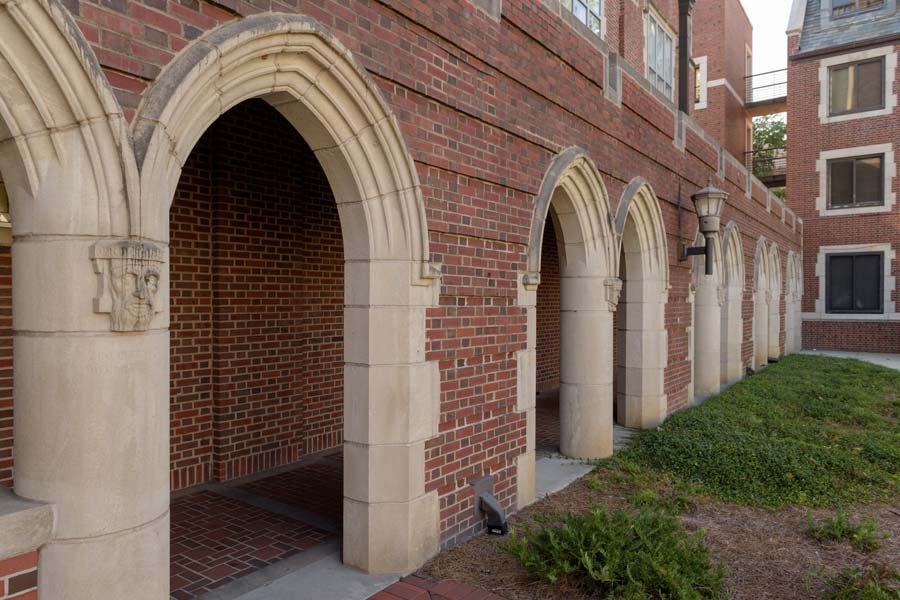
The front of Brittain features 10 Doric pillars emblazoned with busts of 10 famous engineers and scientists — and the fields to which they contributed. The 10 fields existed at Tech during the 1928 construction of the building.

Covered walkways lead to Brittain’s entrance.
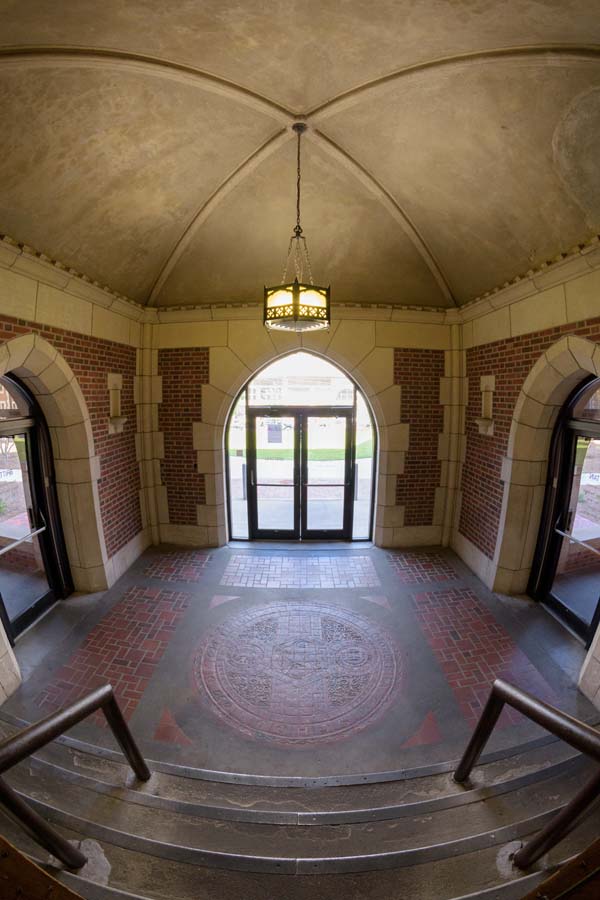
The entry of Brittain Dining Hall has a terra-cotta seal of Georgia School of Technology on the floor.
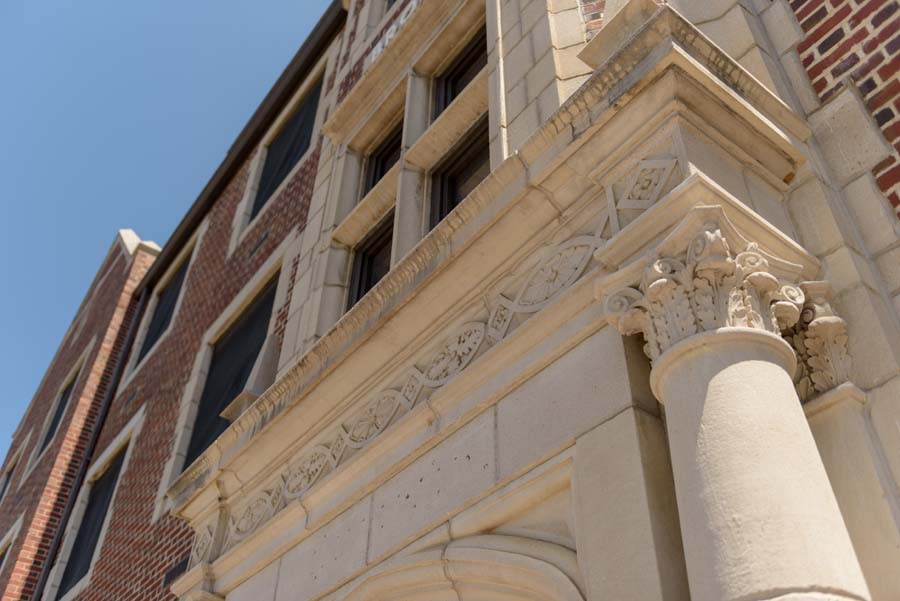
Column detail of Brown Residence Hall, the oldest active residence hall on campus.
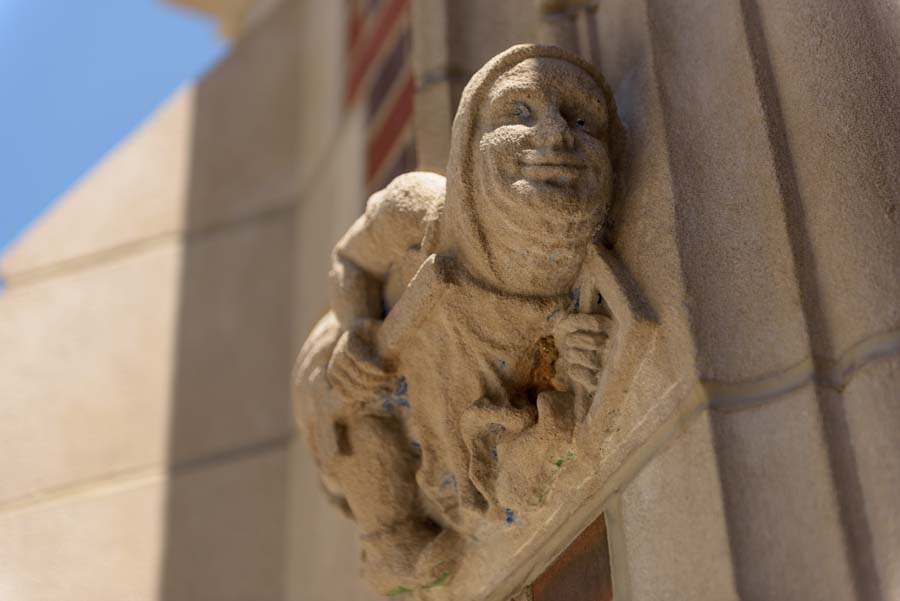
Gargoyle-like figures holding tools flank the entrance to Harris Hall.
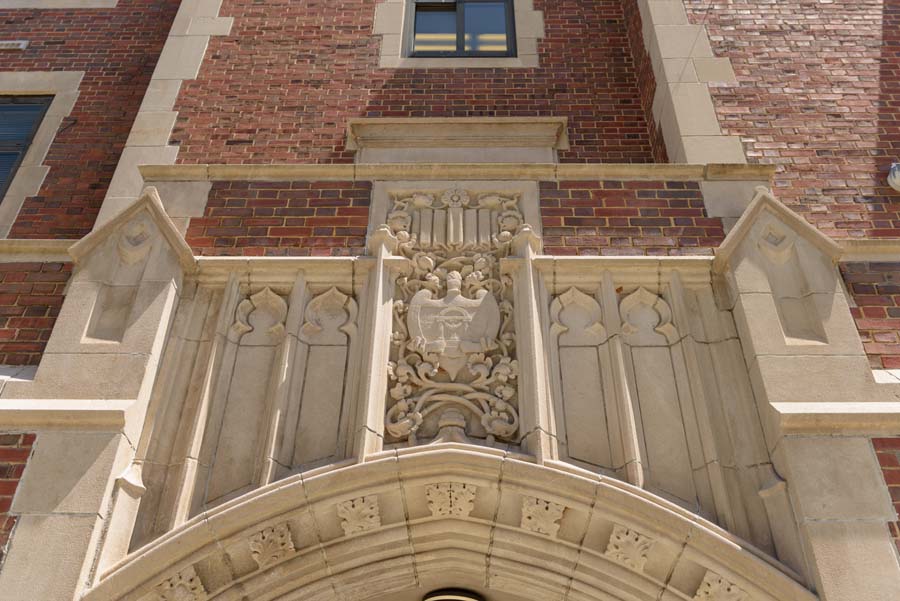
This carving adorns the door of Cloudman Hall, which was initially designed as the Co-Op dormitory.
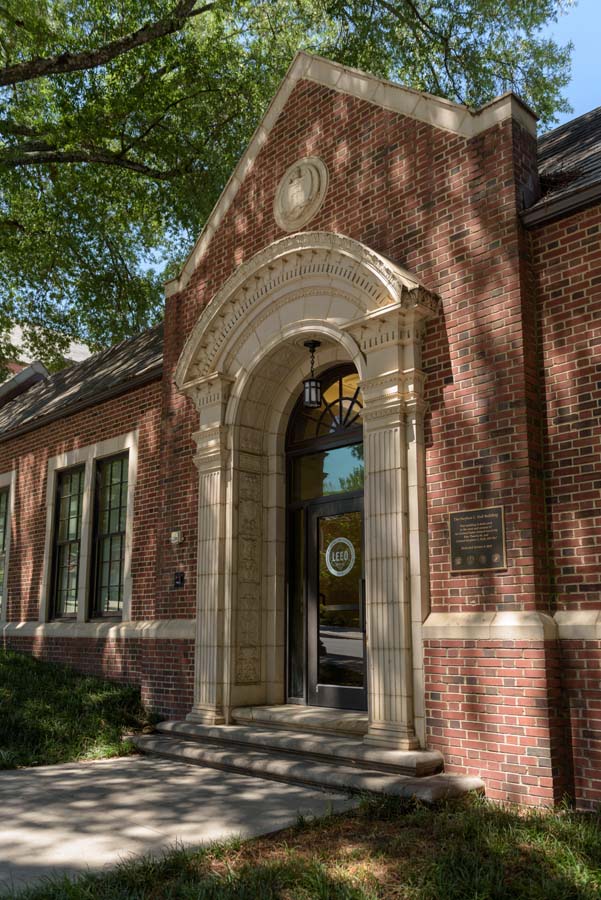
The entrance to the Stephen C. Hall Building features the Georgia Tech seal above the door.
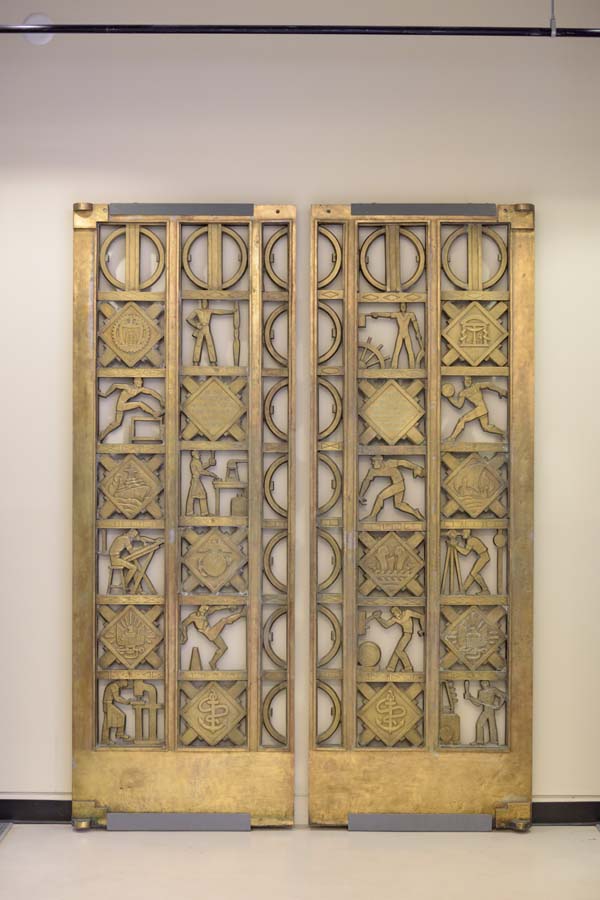
Naval gates inside the Stephen C. Hall Building were designed by sculptor and Tech alumnus Julian H. Harris.
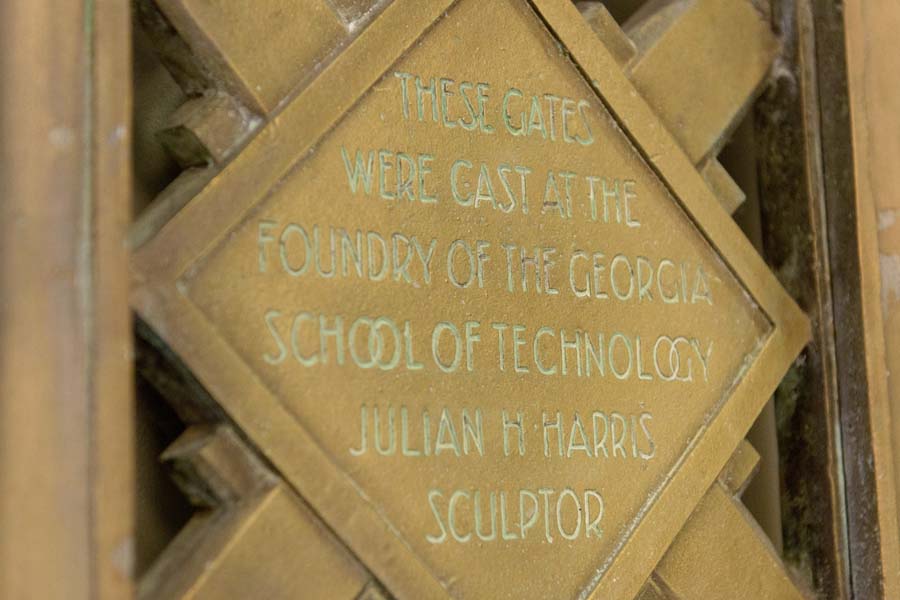
“These gates were cast at the foundry of the Georgia School of Technology. Julian H. Harris, sculptor.”
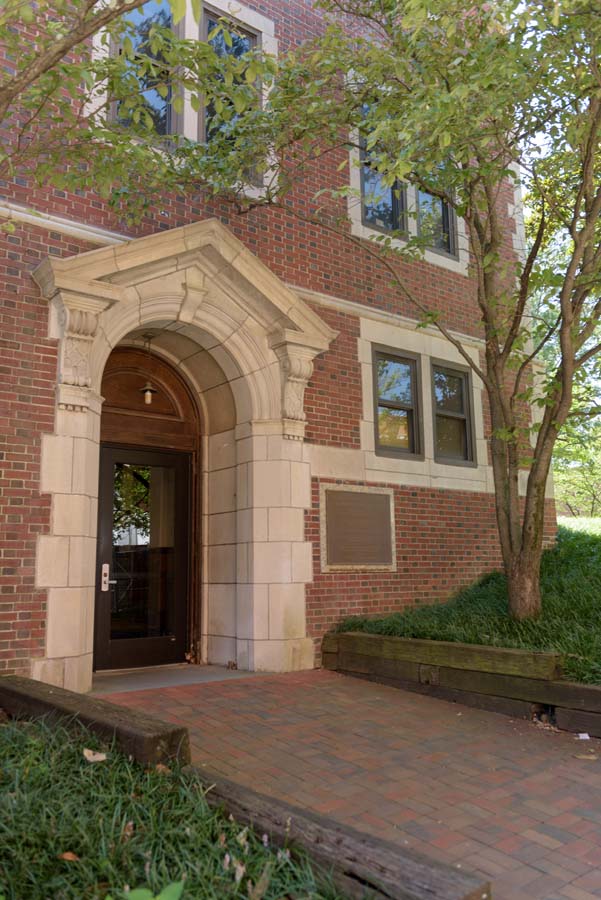
Side entrance (on Bobby Dodd Way) to D.M. Smith Building
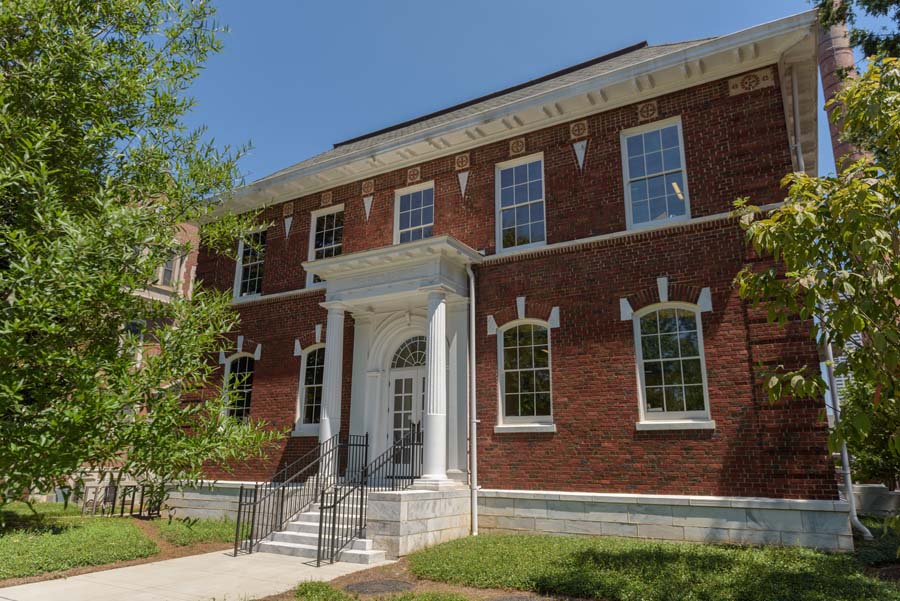
The red crosses under the eaves of the Chapin Building are a reference to the building’s original use as a hospital.
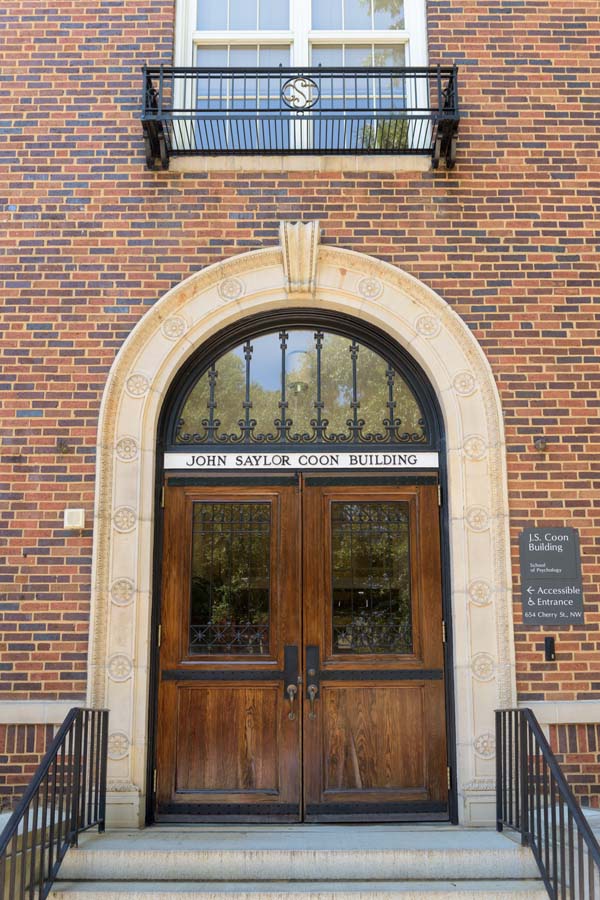
The John Saylor Coon Building entrance (on Cherry Street) is adorned with wrought iron.
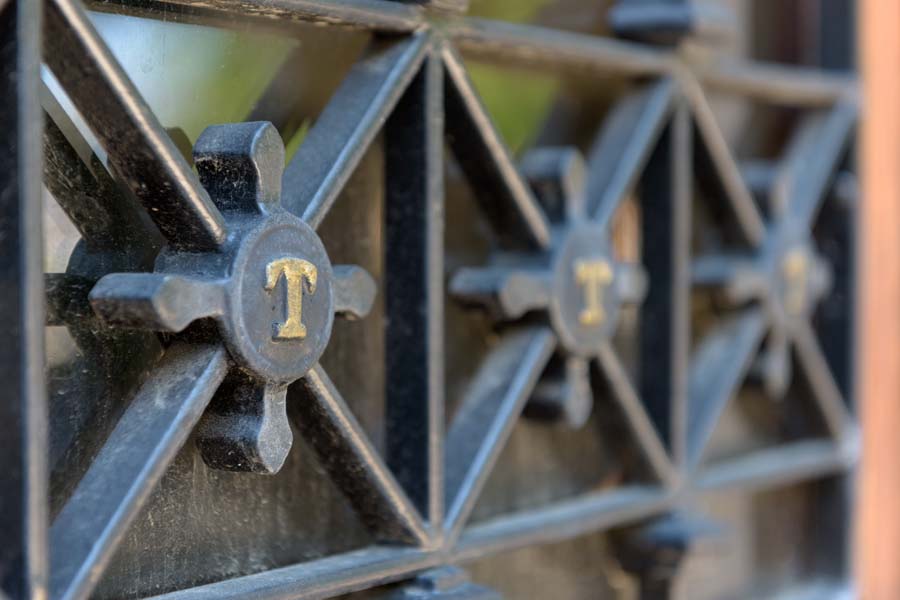
Wrought iron Ts (for Tech) adorn the doors of the John Saylor Coon Building.
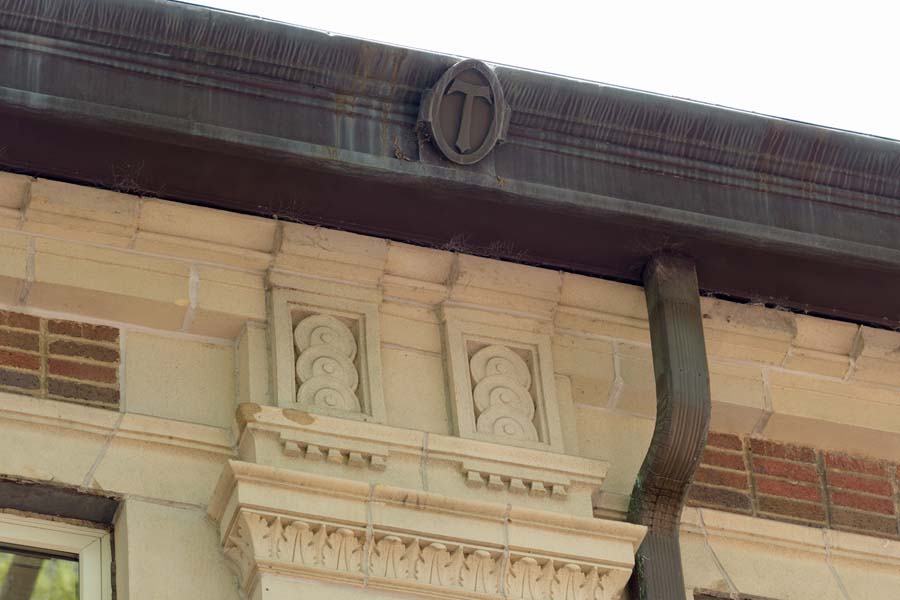
The roof edge of the John Saylor Coon Building is adorned with Ts (for Tech).
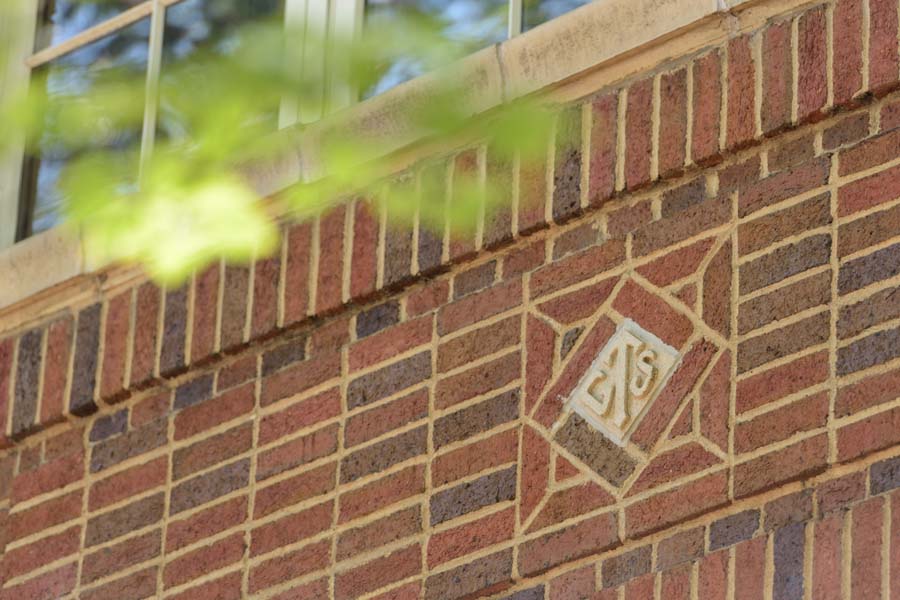
“GST,” for Georgia School of Technology, is on the wall of the John Saylor Coon Building.
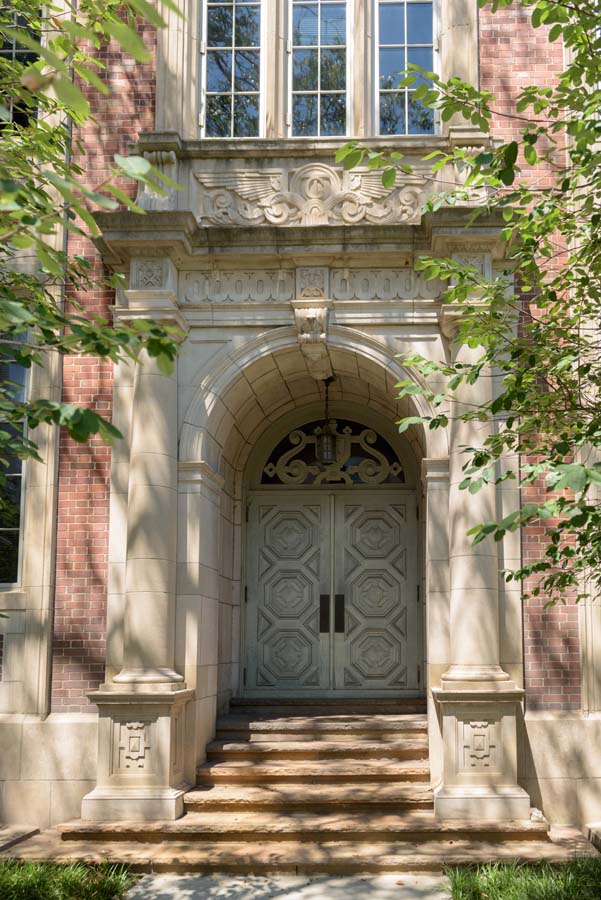
Door of the Daniel J. Guggenheim Building (facing North Avenue).
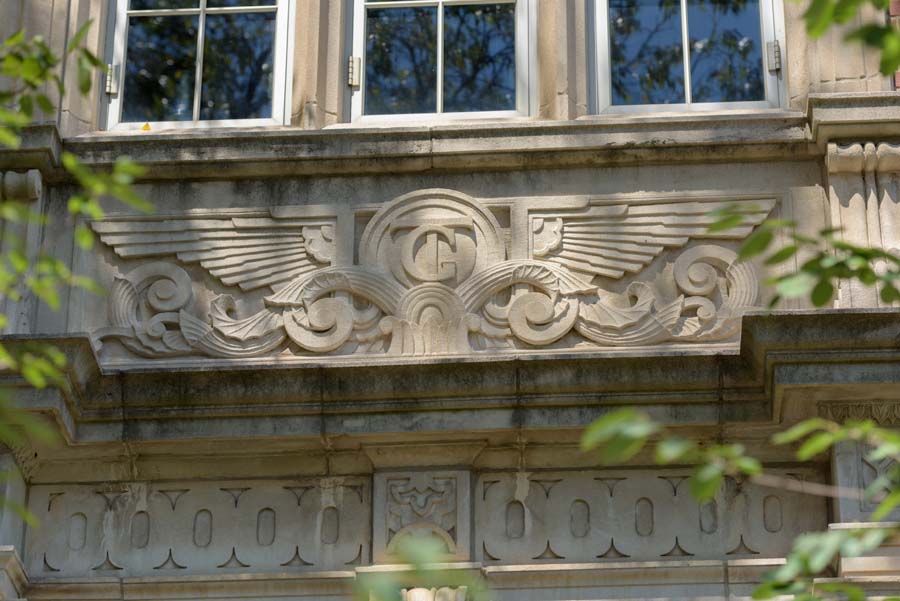
A close-up of the Daniel J. Guggenheim Building entrance.
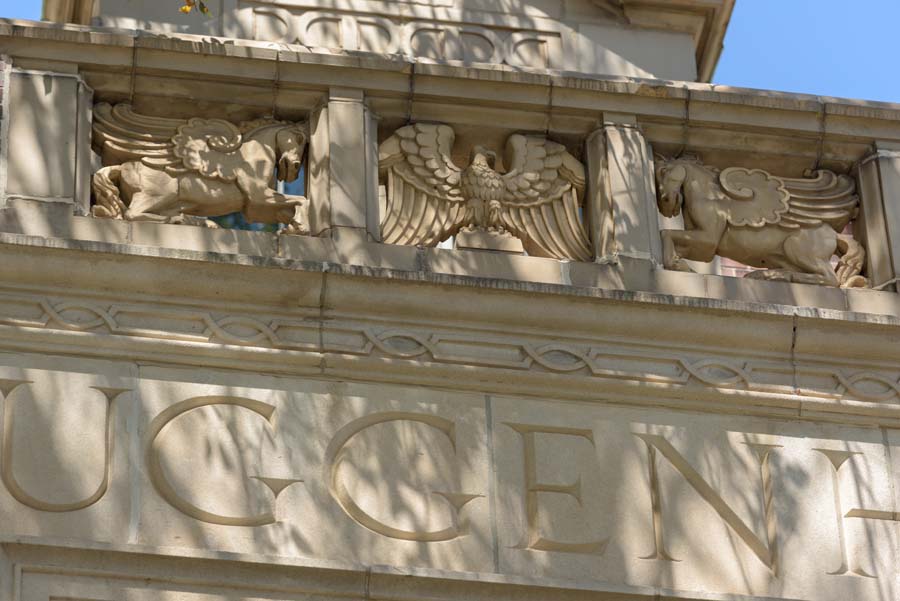
Details of the Daniel J. Guggenheim Building.
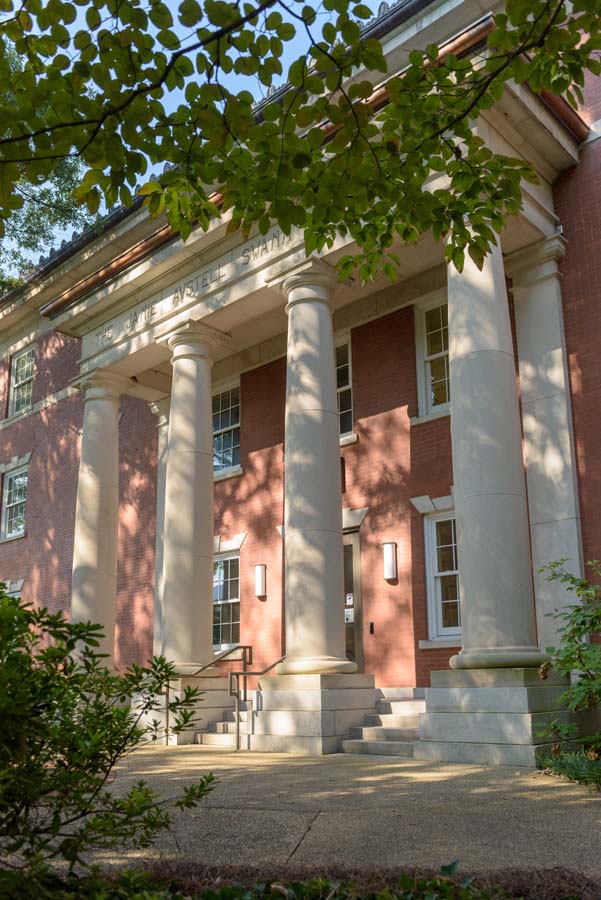
The Jane Austell Swann Building is a former dormitory.

Plaque on the Swann Building: Erected in the year 1901 by James Swann in loving memory of his wife Janie Austell Swann.
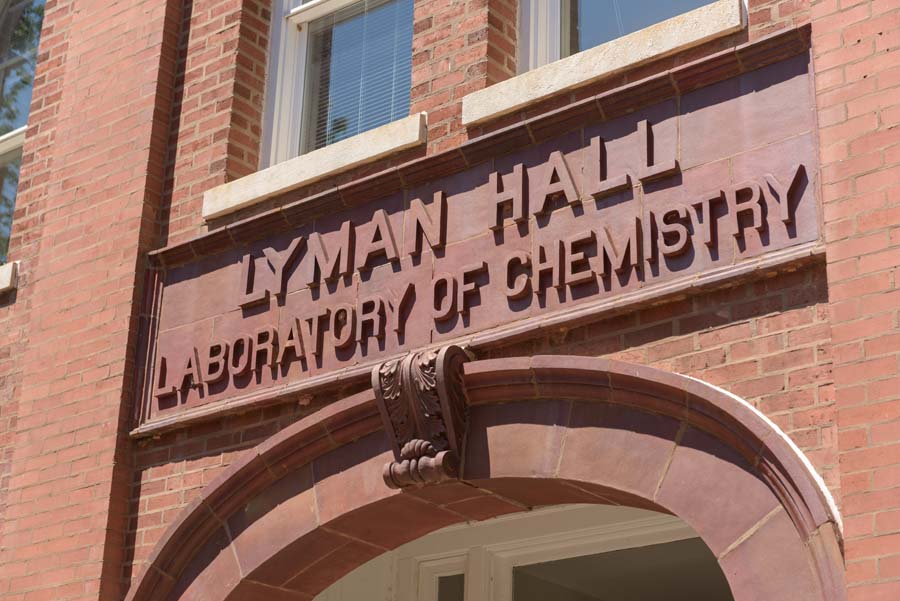
The sign on Lyman Hall denotes the building’s original use as a chemistry laboratory. Lyman Hall was a professor and president of Tech when the name was the Georgia School of Technology.
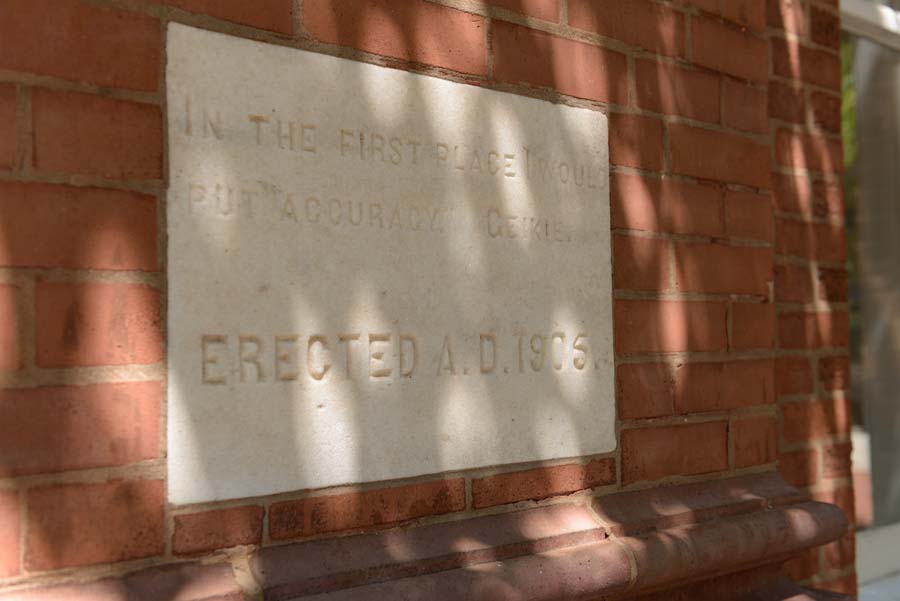
Quote on Lyman Hall: “In the first place I would put accuracy.” — geologist Sir Archibald Geikie.
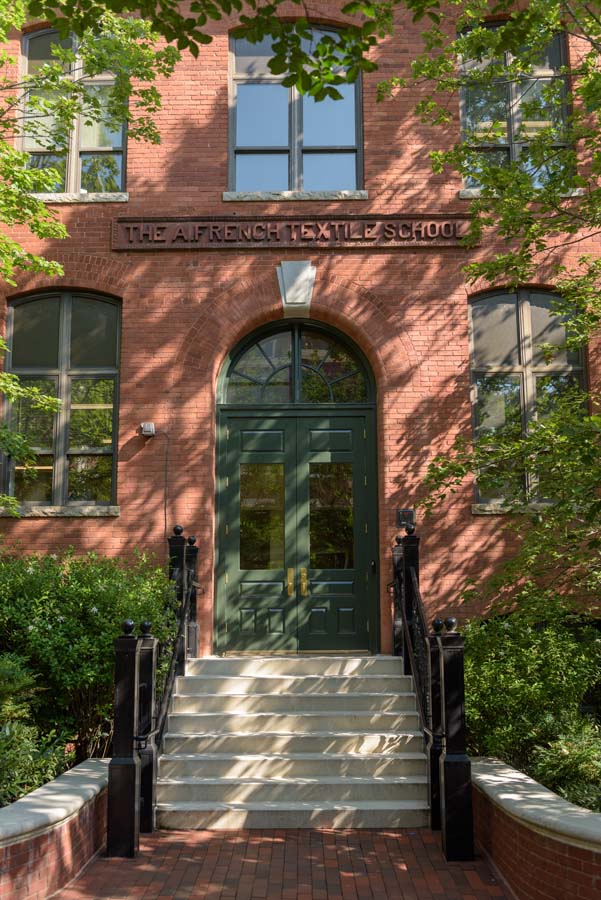
The French Building is the former home of the A. French Textile School.
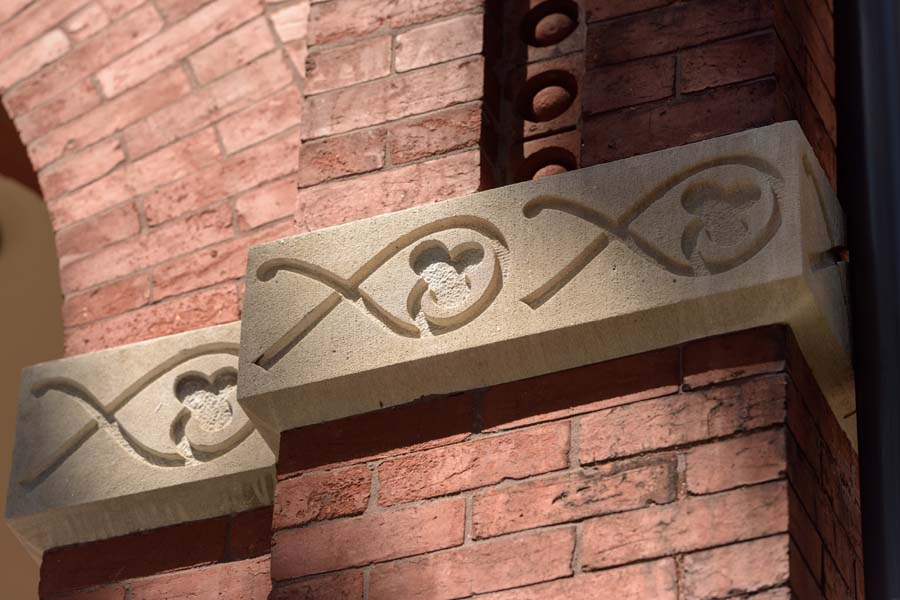
On the Tech Tower porch, the arch design includes fish with a clover pattern, a religious connotation. There used to be a chapel in the Tower.
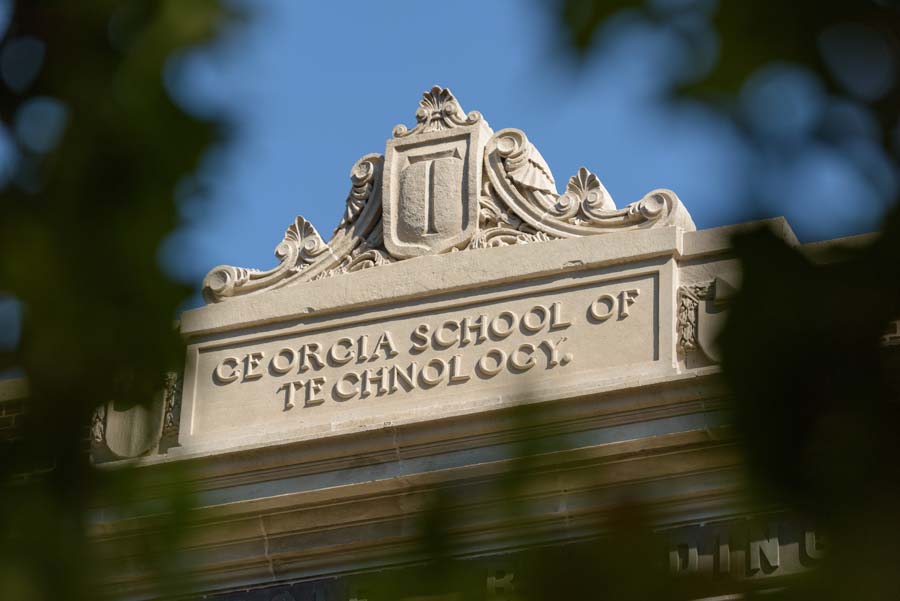
The entrance to the Carnegie Building is emblazoned with Georgia School of Technology.

On the terrace in front of Tech Tower is a marbled bench memorial to Paul Howes Norcross, a 1902 Georgia Tech alumnus who perished in the Norman boat disaster of May 8, 1925.
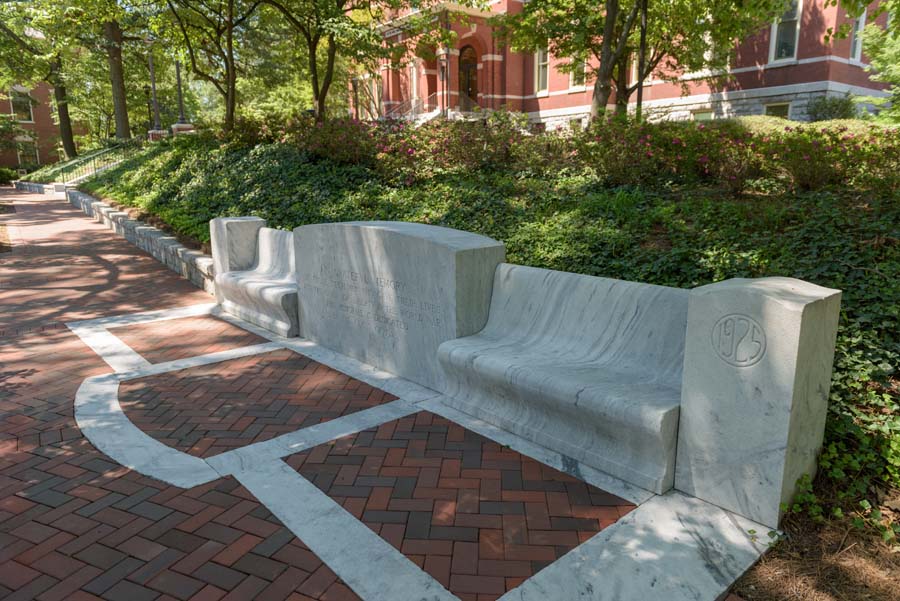
A pair of marble benches donated by the Class of 1925 in memory of those who died in World War I.
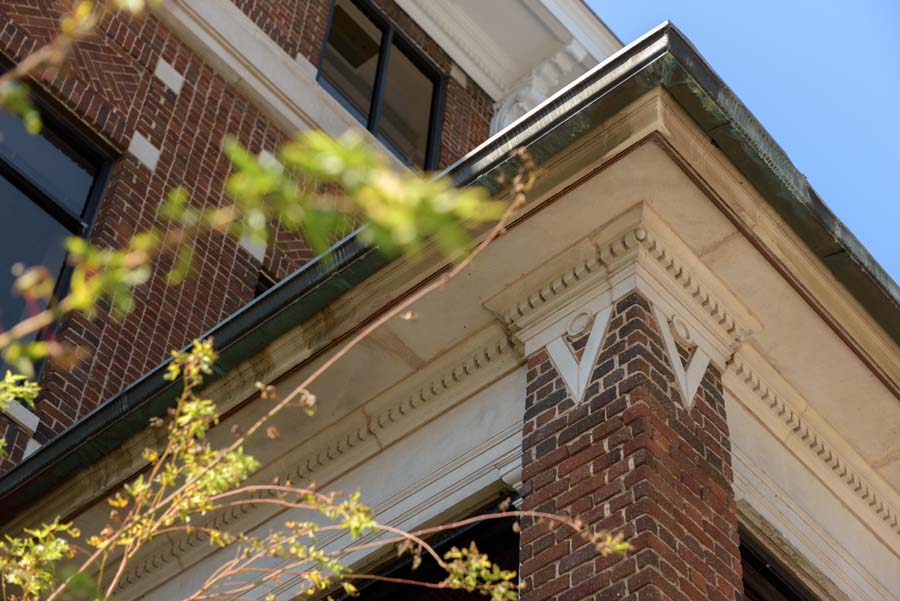
Corner detail of Georgia Tech’s Alumni House on North Avenue.
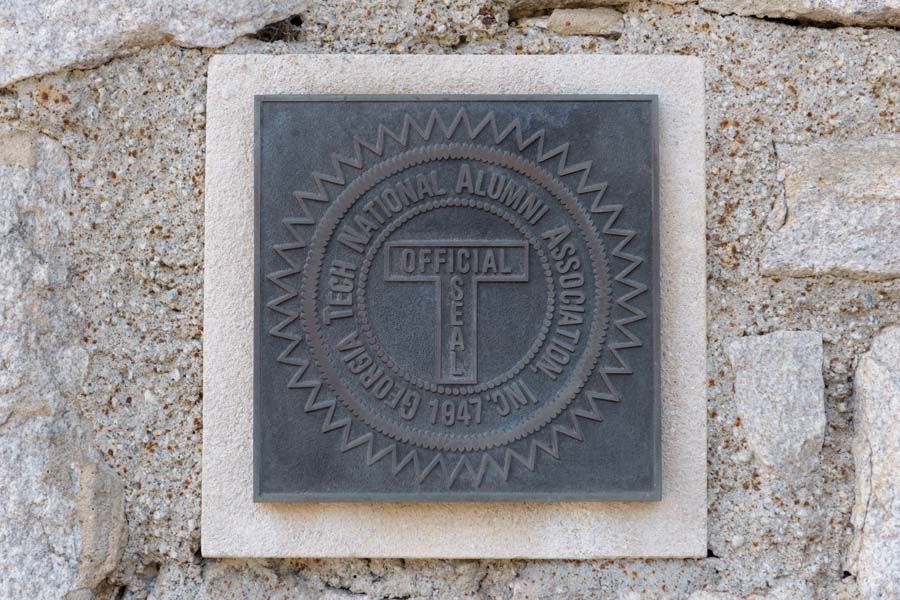
Official seal on the Alumni House.
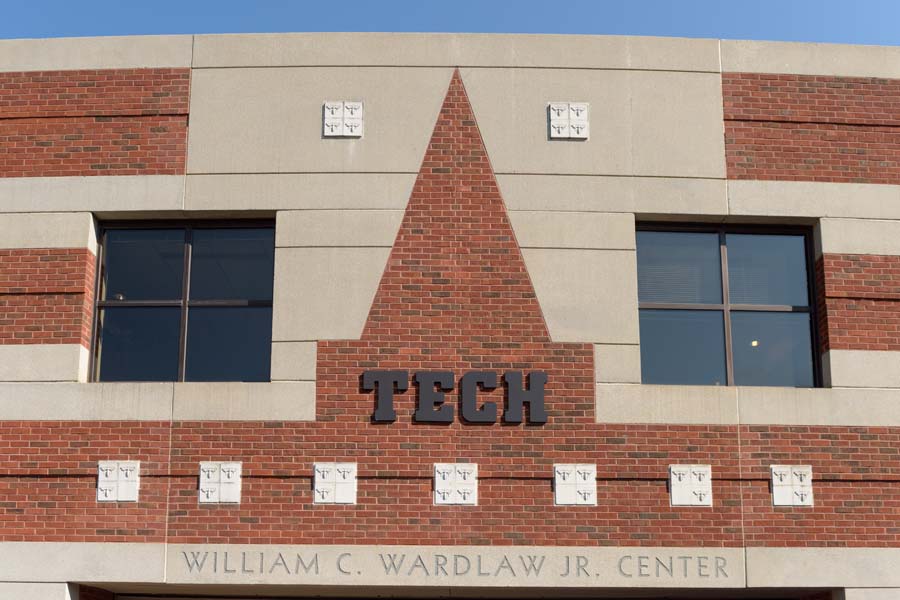
Above the entrance to the Wardlaw Center is a brick version of Tech Tower, with yellow jackets incorporated into the design.
Do you know a hidden place on campus that should be featured?
Email us at editor@comm.gatech.edu
Writer: Victor
Rogers
Photographer: Rob Felt
Digital Designer: Melanie Goux

